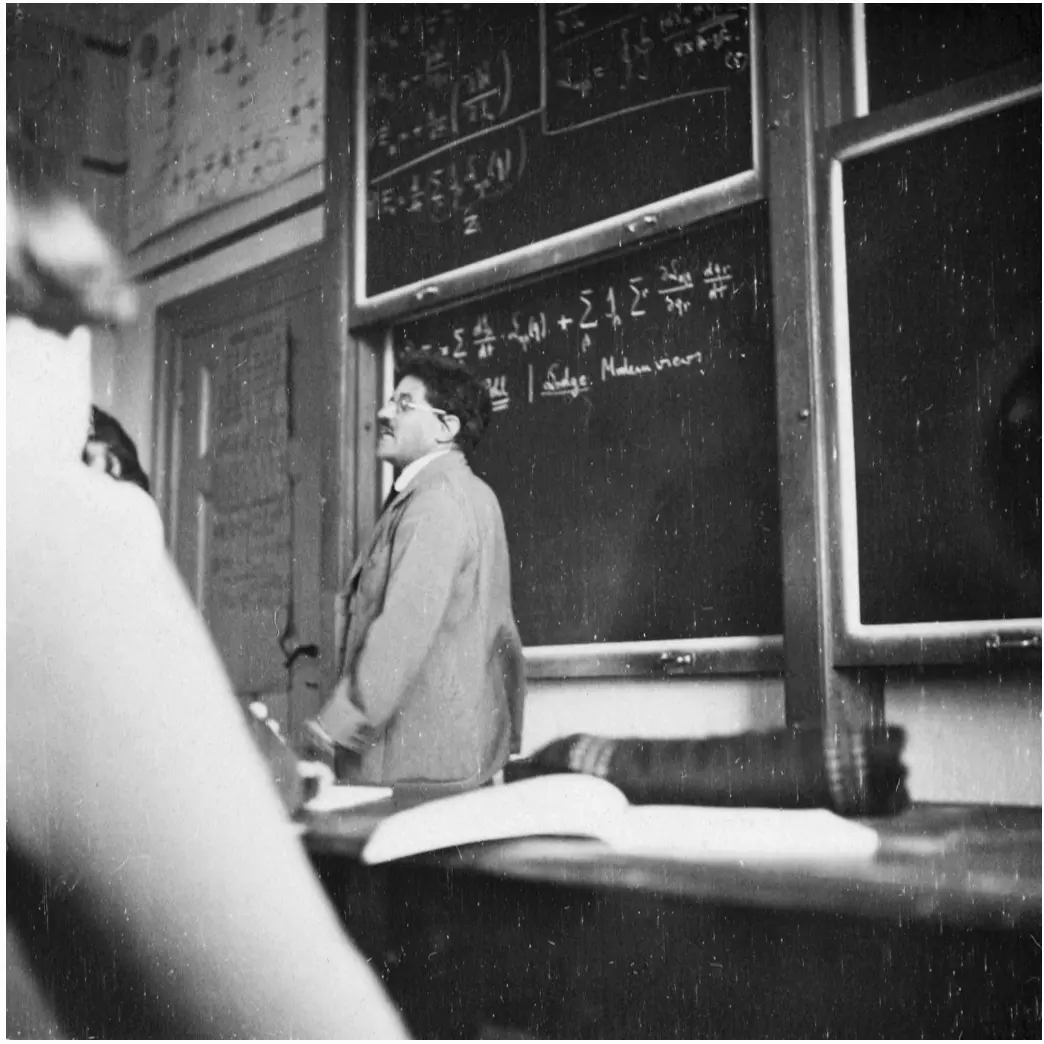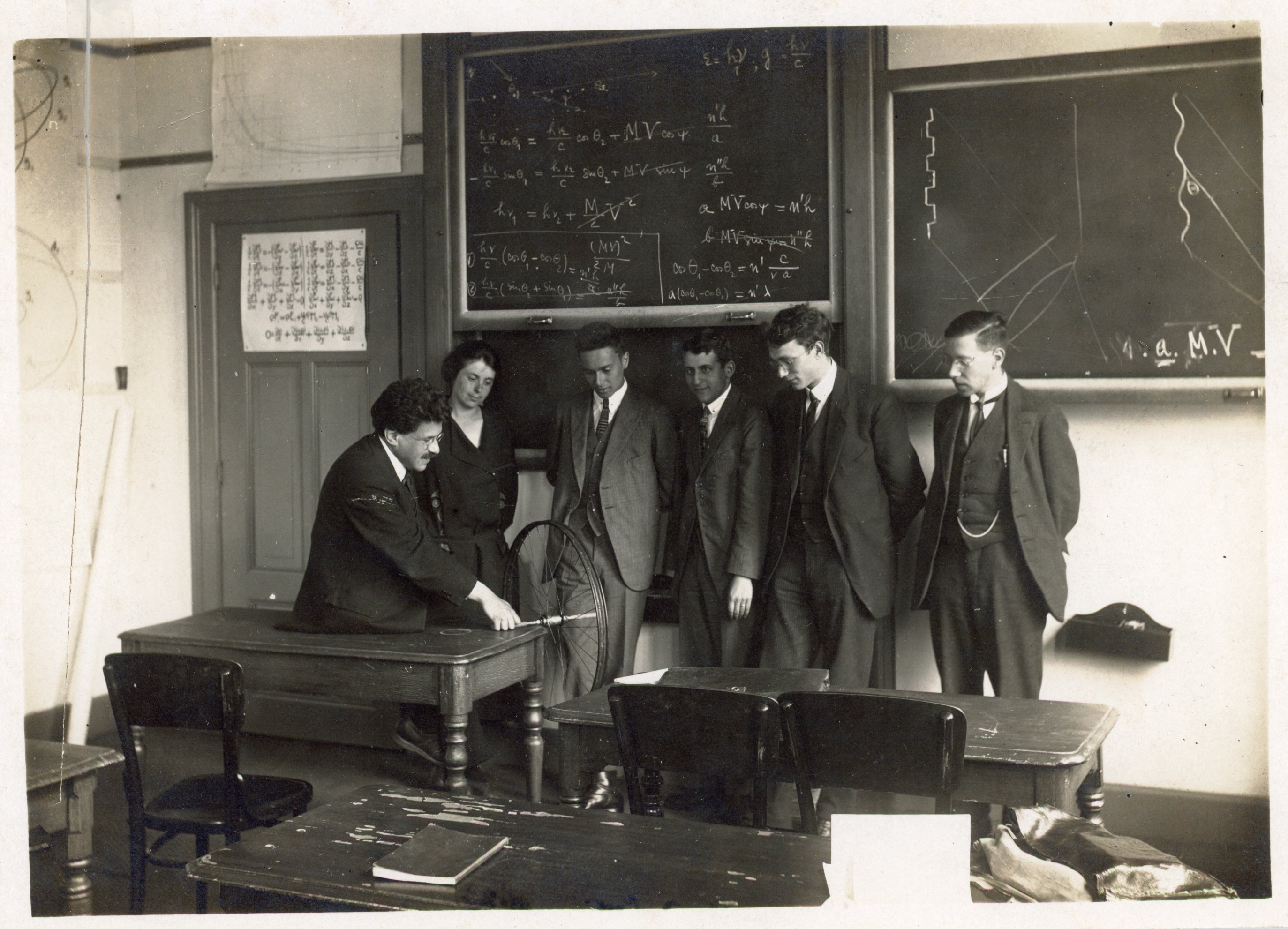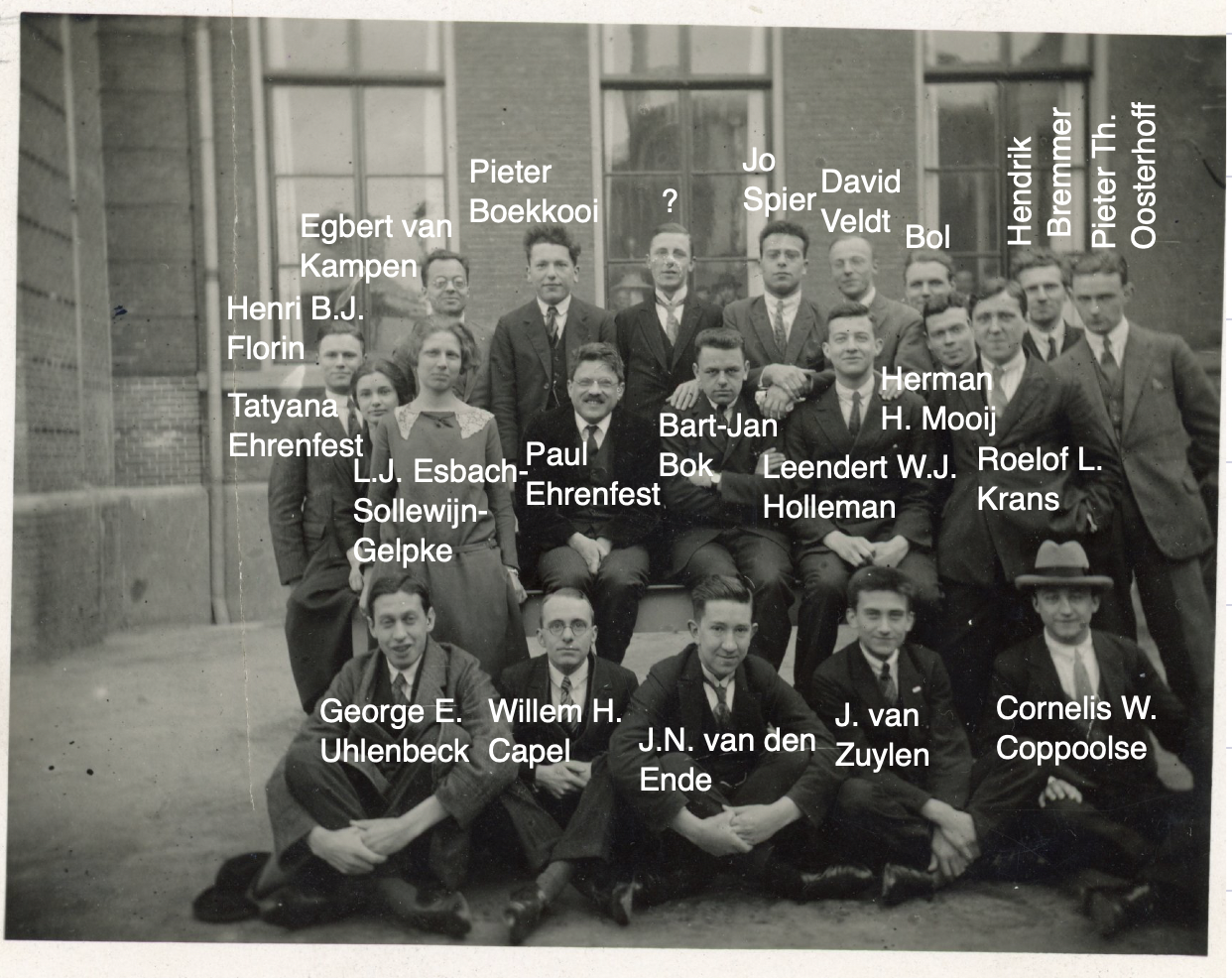Paul Ehrenfest as a teacher

|

Ehrenfest with students around 1925, in the small lecture room of the Institute (number 6 on this map). [Noord-Hollands Archief] |
From the outset, Ehrenfest devoted all his attention and energy to teaching his students in Leiden. This went far beyond simply giving the prescribed lectures. In fact, he prepared these so thoroughly that he initially had hardly any time left for research. But above all, he tried to create an inspiring atmosphere, similar to the one he himself had encountered as a student in Göttingen.
In his view, the biggest problem was the minimal contact between students and academic staff, and between students themselves. Geographical, professional, social and age differences stood in the way of such contact. Outside the lecture hall, interaction with professors was generally limited to the occasional tea visit. Due to a lack of money, many science students travelled daily between Leiden and their parents' homes in one of the surrounding villages or towns. They hardly participated in Leiden student life. Moreover, student life was dominated by non-faculty associations. In addition to the elite student corps, there were various other, more or less compartmentalised associations.
Ehrenfest's first initiatives in Leiden were therefore mainly aimed at promoting mutual contacts. They included the establishment of the so-called Wednesday evening colloquium, the revival of a faculty study association, and the creation of a student reading room.
The weekly colloquium, first held at Ehrenfest's home and later at the Institute for Theoretical Physics, became a household name both at home and abroad. Established figures were subjected to a barrage of questions and critical comments after or during their presentations. Invited students were enabled and even encouraged to debate on equal terms with the greats of the world. Ehrenfest's main objective was aptly characterised in the student almanac:
It is here that one becomes acquainted with the most modern research, with the hesitant groping and fumbling, that one observes the entire frontier of science, and even if the clash of opinions may be somewhat confusing to the younger ones, they learn to regard physics as a living organism and not as a dead, albeit stylish, whole.
Ehrenfest expected the invited students to attend the meetings regularly. He himself kept meticulous attendance records. The initiative was almost immediately followed by chemists and mathematicians.

Ehrenfest demonstrating conservation of angular momentum (around 1924). From left to right: Paul Ehrenfest, unidentified, Jan Tinbergen, Samuel Goudsmit, Eliza Wiersma, unidentified. Here is another photograph from the same occasion. |
Ehrenfest also discovered the existence of a faculty debating society founded in 1888 and now dormant, called Christiaan Huygens. By strongly encouraging students to become members, Ehrenfest soon succeeded in reviving the association. The main activity of this society was to organise fortnightly meetings of all students interested in the exact sciences, both beginners and advanced. The meetings took place in the evenings at the home of one of the students. The programme usually consisted of three lectures given by the students: a long one, an improvised one and a short one.
Ehrenfest, who was often present, liked to join in the discussions. Presumably less welcome were his exhortations to abstain from alcohol and tobacco. Commitment and involvement were prerequisites for membership. Ehrenfest did his best to persuade students to shift their activities as much as possible from the general associations to Christiaan Huygens. This was particularly true for students who were members of the Leidsch Studentencorps, which he detested. In the 1920s, he also founded an association for physics students called De Leidsche Flesch (the Leiden Jar). Here, advanced students would lead seminars, following the example of his own colloquia.
One more photograph of Ehrenfest with students (from the Kramers family archive). Uhlenbeck, Krans, and Florin were his Ph.D. students. Van den Ende and Mooij were Ph.D. students of Keesom. Capel and Bremmer were Ph.D. students of De Haas. Oosterhoff was a Ph.D. student of Hertzsprung (astronomy). Van Kampen was a Ph.D. student of Van der Woude (mathematics).
Here you can read why Uhlenbeck would later speak of the "luck and privilege to have been students of Paul Ehrenfest".
